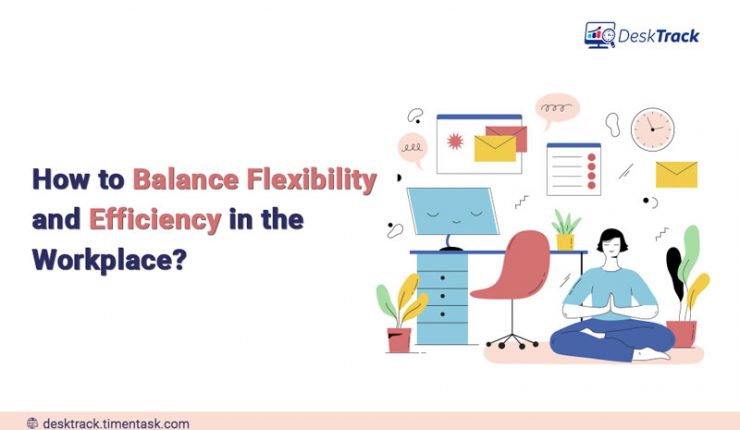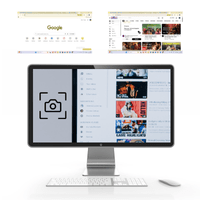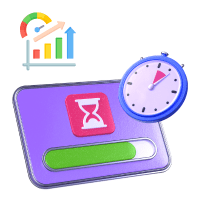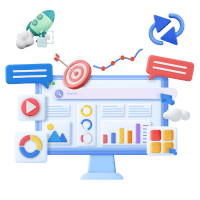
The workplace environment has undergone a radical transformation in recent years. Most employees desire flexibility in their workplaces. At the same time, employers try to provide flexibility to increase employee satisfaction rates. But, the importance of maintaining efficiency and productivity is undeniable. Too much flexibility at the workplace can make the employees less efficient. There should be a balanced approach to creating a perfect work environment. You can use employee system monitoring software or choose other techniques for the balance.
Importance of Flexibility at the Workplace
A flexible workplace means employees have control over the time and place of work. They can even decide on how they will do their regular work. This flexible schedule will make employees more productive because they can maintain the desired lifestyles and meet their needs.
Importance of Efficiency at the Workplace
The term ‘efficiency’ can be defined as the employee’s ability to achieve a goal without wasting energy and effort. Employee efficiency helps you determine your employee’s ability to manage business processes and activities. These tasks can range from decision-making to automation. So, your workers have to be highly productive even if they work from home.
The Relationship Between Flexibility and Efficiency
There is a positive relationship between a flexible work environment and efficiency in the workplace. Flexible workers have found higher job satisfaction. Their work-life balance also gets improved due to the flexible working schedule. So, every employer should understand the importance of flexibility at the workplace.
Challenges of Balancing Flexibility and Efficiency
Maintaining a perfect balance between flexibility and high efficiency in time and work is challenging.
1. Potential Conflicts and Trade-Offs
If some employees are untrustworthy, it can lead to several issues. Besides, a flexible work schedule may result in conflicts while managing clients. Furthermore, there is a risk of a mess when your teams try to coordinate with each other.
2. Impact On Employee Productivity and Morale
Remote and flexible work schedules may result in employee communication issues. So, there will be decreased productivity, and you will not find any improvement in your business bottom. It especially happens if you have not implemented any employee productivity monitoring software.
3. Common Misconceptions and Myths
Not every worker and employer understands the importance of flexibility at the workplace. Some employers think that flexibility will prevent them from maintaining smooth operations.
Strategies for Achieving Balance Between Flexibility and Efficiency
Many companies have implemented different strategies to ensure a flexible schedule and efficiency in time and work. Find the list of those tactics to improve your workplace.
1. Creating a Flexible Work Environment
If you are aware of the importance of flexibility at the workplace, check some tips for creating the desired work environment.
2. Embracing Remote Work Options
Today, many organizations have embraced the work-from-home schedules for their employees. They have found that remote workers have shown high productivity. However, you should improve your workplace technology to help your employees work remotely. For instance, modern video conferencing platforms and other cloud solutions have to replace your legacy system.
3. Offering Flexible Work Schedules
A flexible work schedule enables workers to choose convenient work hours. Your employees can also adjust working hours every week or month depending on their needs and workflow. But, as an employer, you have to set some guidelines for workers who prefer a flexible routine.
The best fact is that even if you have accepted flexibility in work schedules, you can still save the core hours to arrange meetings.
4. Providing Autonomy And Trust
If your employees do not get the freedom to make decisions and manage projects, it will degrade their efficiency in time and work. That is why employee autonomy is highly important for every organization.
How to Implement an Efficient Work Process
You have to adopt work processes that make your employees more efficient.
1. Streamlining Workflows
Look for tech-driven solutions for streamlining your regular business activities. For instance, you can automate repetitive tasks like manual calculations and data entry. Automation also reduces the risk of human errors, and your employees will achieve the highest efficiency. However, while streamlining the workflow, you should ensure that there must be scope for business growth.
2. Setting Clear Goals and Expectations
To help your employees achieve higher efficiency in time and work, you should encourage them to focus on their performance goals. Setting a goal also enables you to measure your employee’s efficiency level. Some employees feel that they are disconnected from business goals. That is why you can collaborate with them to set your objectives and anticipations.
3. Leveraging Technology and Tools
Employee monitoring and time tracking software help with better planning and scheduling of work. Your employees will also be able to prioritize the work and manage projects more efficiently. Innovative tools also allow you to track the progress of different projects, individuals, and teams. So, you can improve productivity at the workplace and involve everyone to maintain transparency.
4. Encouraging Open and Transparent Communication
With open communication, you can make your employees feel their value in your organization. If they learn that you appreciate their unique ideas and opinions, they will express them. Let your employees understand what you need from them. At the same time, you should learn about their anticipations. Communication helps you develop a community where your employees feel motivated.
5. Facilitating Cross-team Collaboration
Cross-team collaboration is another way to make your remote employees more efficient. Create a collaborative environment and let every team know about its responsibilities. You can also consider tools that connect your teams and facilitate communication. Moreover, your teams should know the channels they should use for communication purposes.
6. Utilizing Project Management Techniques
There are different techniques for managing any small and big projects. No matter whether your employees work remotely, they can apply these techniques. As a leader, you should learn about the weaknesses and strengths of every team member. Constant communication will help you manage the project flow. However, to measure your project’s success, you can set some parameters. The best step is to invest in a tool for project management and employee monitoring.
Overcoming Challenges and Resolving Conflicts
Conflicts and challenges may occur when you try to make your team more efficient.
- Addressing individual needs and preferences- Every team member may have different interests and preferences. So, you should address your employees’ preferences before taking any step for your workplace.
- Seeking input and feedback from employees- Ask for employees’ feedback regularly, as input is highly important for achieving goals. You can prepare questions that you should ask your employees to know their reactions. It is also better to listen to your workers’ issues actively and find the right solution. Depending on their feedback, you will be able to fill gaps. Moreover, this approach will keep your employees involved in your business process.
- Finding compromise and common ground- A mutually acceptable solution can be the best option if there is any conflict. A compromise with another party will also enable you to avoid any loss of resources.
Tips for Efficiency and Performance Improvement
There are some other effective practices for developing a work environment where you can find both efficiency and flexibility.
1. Regularly Assessing and Adjusting Strategies
Although you have implemented strategies, they may not always work consistently throughout the year. So, you should regularly evaluate their effectiveness and experiment with various tactics.
2. Developing a Culture of Learning and Adaptability
Adaptability is crucial in a workplace because an adaptable employee can cope with any changes in his workplace. Besides, he is more productive, resourceful, and determined. Regardless of the situation, your adaptable team will be happier.
Again, it is essential to nurture a learning culture in your workplace. It will boost employee morale and keep your team motivated. Moreover, your employees will have a growth mindset. They will work better and enjoy accepting new challenges.
3. Recognizing and Rewarding Flexibility and Efficiency
It is the best effort to maintain efficiency in the workplace. Your employees always like to feel appreciated. So, you can reward employees who have performed best in the year. It will encourage others to improve their regular work habits. But, how will you check the employee’s performance? Take advantage of reliable employee monitoring software, which lets you analyze productivity and monitor daily desktop activities.
Conclusion
You have now understood the significance of maintaining both efficiency and flexibility at the workplace. Setting proper guidelines and clear expectations is vital to ensure both these aspects of an ideal workplace. Although there are some challenges, improved collaboration, and communication will remove them. Besides, reliable system monitoring software will simplify your effort to balance high employee efficiency and a flexible work schedule. So, try out various strategies and satisfy your employees without affecting productivity. You will also find a better performance of your business.








